Paris Opera Ballet School / Palais Garnier, Paris / April 7, 9, 11, & 12, 2011
The spectacularly ornate Palais Garnier opera house, home to the Paris Opera Ballet, can be daunting to a visitor, given its grand staircase, paired pillars of marble in exotic colors, elaborate gilded carvings, and profusion of crystal chandeliers. Nevertheless it’s a perfectly suitable showcase for the children, adolescents, and very young adults being trained in the company’s celebrated academy. Their accomplishment is equal to the effusively regal setting while their unaffected manner is an antidote to it.
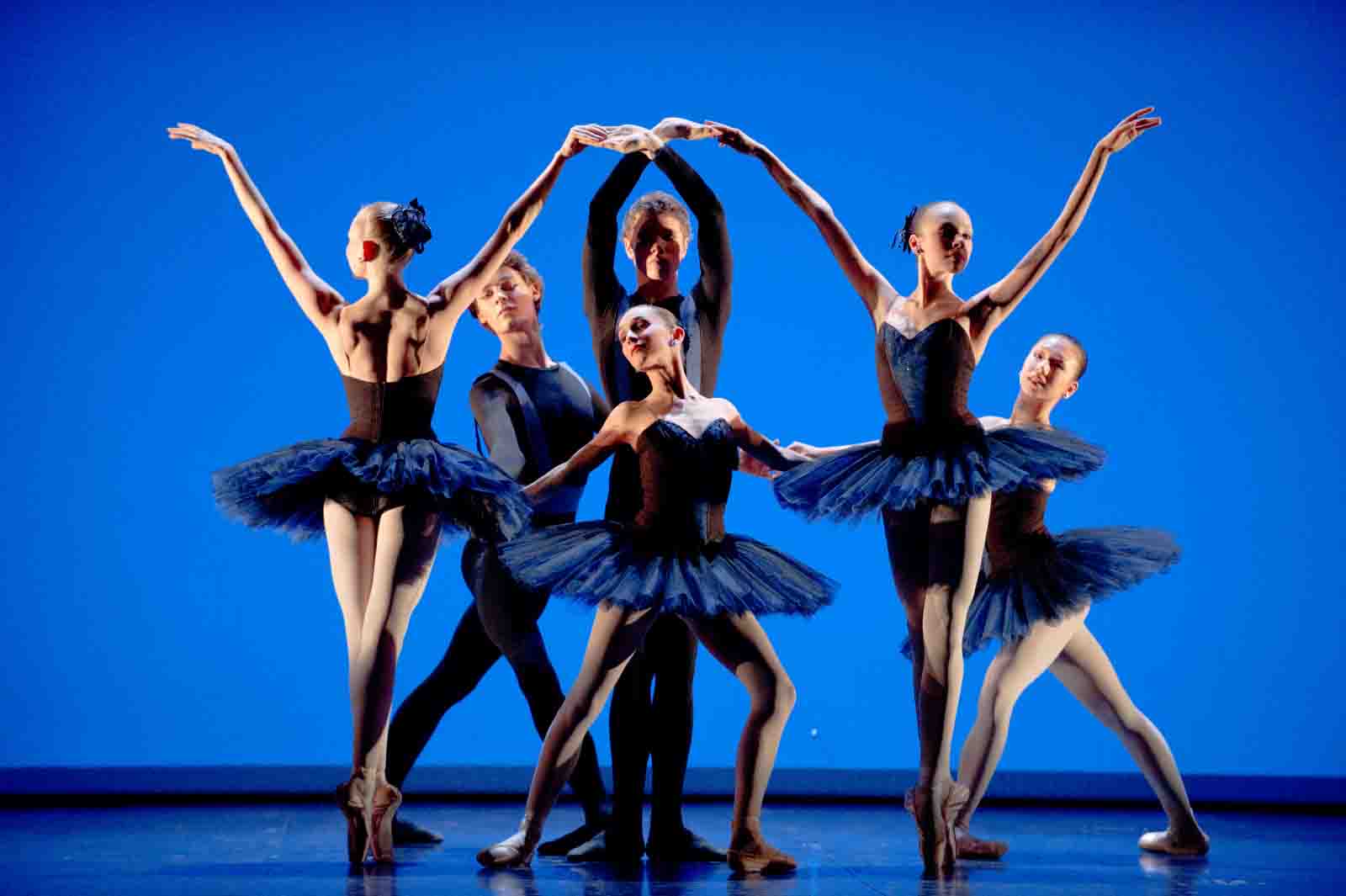
Linked: Students of the Paris Opera Ballet School in John Taras’s Designs for Six
Photo: David Elofer
While I was spending part of April in Paris, I saw two performances that the students gave at the Opéra, as it’s called: two different casts in Pierre Lacotte’s back-to-the-original version of Coppélia, prefaced by John Taras’s Designs for Six.
Taras, who died in April of 2004, some two weeks short of his 85th birthday, made a substantial contribution to the classical dance world, as dancer, choreographer, and ballet master for key companies on both sides of the Atlantic. As I recall him, from a slight acquaintance during his many years with the New York City Ballet, Taras was a very nice man, a gentleman and–more telling–a gentle man, modest and soft-spoken. That personal quality infuses the ballet for which he’s best known, Designs for Six, the Paris Opera Ballet’s title for the work he created in 1948 for the Metropolitan Ballet as Designs With Strings, and subsequently called Design for Strings. The music, accessible and agreeable, is the second movement of Tchaikovsky’s Trio for piano, violin, and cello in A minor.
It’s a simple, well-made ballet, which takes its inspiration from Balanchine. It lacks the rigor and invention of the master, to be sure; still it is lovely to look at, intelligent, and exquisitely understated. What’s more, it makes a fine vehicle for young dancers on the threshold of their professional careers because it benefits from the fresh, innocent quality of their youth while displaying the technical accomplishment to which they’ve devoted the better part of their childhood and early adolescence.
I had seen the ballet several times over the years in several different places–where and when I can’t recall–but never until I saw it performed by the advanced students of the Paris Opera Ballet School this spring, did I understand what force it could gain from a young crew of talented, impeccably trained dancers. This was immediately apparent from the striking illustration of classical placement in the opening tableau–a statement about exactitude tempered by grace.
That first image has the sextet–four women and two men–posed together in silhouette against a blue-sky cyclorama. Very slowly, as if at the pace of a sunrise, the light increases to illuminate the flesh tones of the dancers’ skin against the jet black of their simple costumes and to filter through the net of the women’s short tutus.
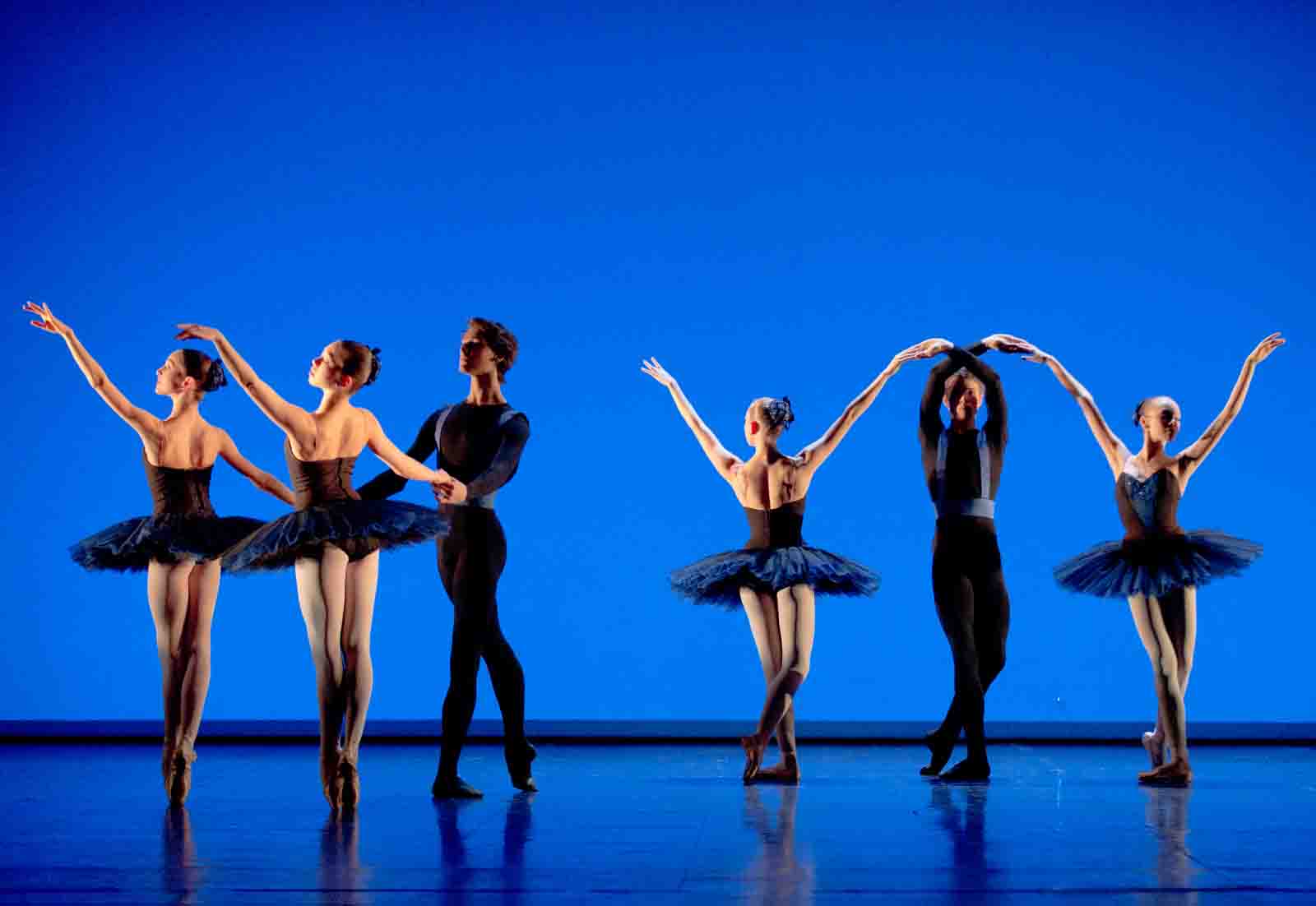
Variations on a Theme: Students of the Paris Opera Ballet School in Designs for Six
Photo: David Elofer
Once the figures begin to dance, they give the overall impression of spooling out an uninterrupted chain of pure beauty. At the same time it’s clear that Taras intends to demonstrate the myriad ways in which six bodies can be deployed. In keeping with his temperament, he’s content to do this unobtrusively, and so avoids the self-congratulation that Jerome Robbins, who excelled at cleverness, put into such a task.
Memorable among the inventive small segments is a women’s duet performed now with crossed arms and linked hands, now with unison dancing alternating with mirror-image movement. There’s also a zippy trio for women, complemented by another pas de trois for the fourth woman and the two men. One passage includes lots of daisy-chaining, though the tactic is admittedly somewhat stymied because it can’t travel much with so few participants. (This is probably the only awkward passage in the piece.) Towards the end of the ballet, the full cast revels in some Spanish-dance flourishes with good humored panache.
The centerpiece of the ballet is a pas de deux of grave beauty that makes its young man and woman look like an emblem of commitment. It’s a subtle reminder that teen-age passions can run very deep and thus deserve to be taken seriously–indeed, honored.
Introduced with this duet is a delicately proposed subtext that gives the ballet its particular charm and its ability to move the audience. The six figures, it suggests, constitute a group of friends firmly bonded by their dedication to an all-consuming enterprise–let’s call it training for the classical ballet stage–that isolates them from the ordinary world. Their entire universe, apart from mastering their art, consists of one another. Then love intrudes and, as it so often does, catastrophically threatens friendship. Once it’s introduced with the pas de deux, this idea tinges the rest of the ballet.
The “veil” is so sheer, however, as to be invisible to some viewers, who see Designs for Six simply as a graceful piece without a theatrical bone in its body. In truth, its good manners so consistently govern the show that when, at the end, the dancers return to the silhouetted tableau in which we first met them, they might be assumed to have had no transformative experience at all. They can be read simply as the willing prisoners of beauty.
Throughout the performances I saw, all the young dancers had an air of striving for something beyond what they had already mastered.
When you watch a bevy of good dancers you’re unfamiliar with, though, there’s almost always one that seizes your eyes, and often your heart as well. For me on this occasion it was a young man named Mathieu Contat, dancing the main duet in one of the performances I saw of Designs for Six and, on my second viewing of the student program, playing Franz in Coppélia. He’s a youth with a body admirably proportioned for eventual danseur noble roles, excellent technique that is still in the process of gaining an adult strength and force, and an irresistible boyish charisma.
In the intermission, a woman of a certain age who exuded Parisian chic, whom I’d asked if she knew the young man’s name, introduced me to Contat, who had appeared in the front of the house in ordinary youth garb (jeans, etc.), offering an offstage version of his onstage charm (self-confident yet respectful of his audience, happy in being where he is and doing what he does). After we chatted briefly, I asked if I could know how old he was. “Seventeen,” he admitted, with some apparent doubt as to whether that was too old or not old enough.
The more ambitious item on the program–in sheer number of dancers and variety of dancing styles–was a looking-backward version of Arthur Saint-Léon’s 1870 Coppélia. At its heart lies its Delibes score, which seems to dictate dancing as it swings from effervescence to romantic sweetness, folk dance, and the practical–sometimes nearly farcical–dramatic needs of the moment. It nearly choreographs itself. Invariably, it inserts itself into the listener’s head and–for good or ill–remains there for days.
Pierre Lacotte, who has made a specialty of reviving 19th-century ballets by going back to the originals as far as is practicable, set his new-old version of the ballet on POB’s students a decade ago and it has usefully remained in the school’s repertory, allowing children and tweens to mingle with the young adults playing the principal roles. It certainly has its delights, despite its occasional unevenness of tone and its failure to hold a candle to the Russo-American Danilova-Balanchine version of 1974, which knows just when (in the third act) to abandon history for the confident originality of genius.
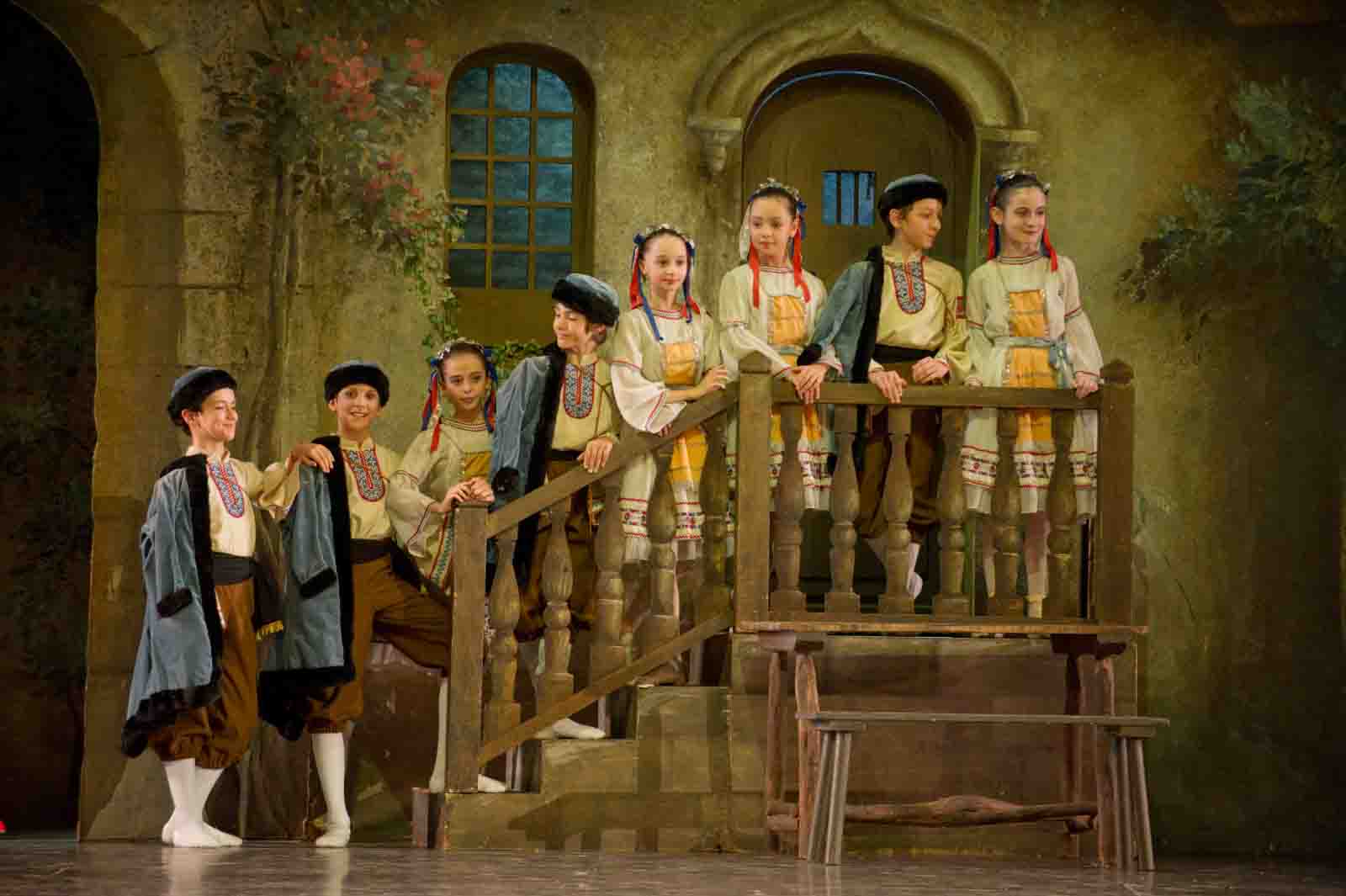
Les Petits Rats: Young students of the Paris Opera Ballet School in Pierre Lacotte’s version of Coppélia
Photo: David Elofer
Lacotte’s production remains unquestionably good for the school, and not merely because it offers an alternative to the parent company’s most recent version of Coppélia–a reportedly hapless and gruesome take on the ballet by Patrice Bart. (Bart’s excuse was making the ballet more like E.T.A. Hoffmann’s The Sandman, a dark-magic tale on which Saint-Léon’s Coppélia was loosely based.)
Lacotte’s Coppélia shows the students the point of significant aspects of their training. Throughout their years of meticulous classical dance instruction, they are also taught acting, mime, and folk dancing–to encourage their imagination and enable them able to give creditable performances in these genres onstage. This history-driven Coppélia also helps the developing dancers realize that the parent company honors its backstory, that the repertory of the past is linked to today’s innovations, and that the dancers of today and tomorrow have an authentic connection to their predecessors.
As a result, when a bevy of dancers surges over the stage in red boots and thick-heeled character shoes, you feel the weight with which the feet strike the floor, the powerful spring in the knees, the feisty carriage of the upper body, and the animal exuberance of bodies responding to lusty rhythms. What you don’t see, mercifully, is ballet dancers so bored by playing a corps of peasants that they do so half-heartedly, without zest or conviction.
The acting and the mime taught in the school results in the creation of distinct, believable personalities onstage. From the moment we first see her, the ballet’s heroine, Swanilda, displays her spirited temperament. In a vivacious mime monologue she has us understand that while she’s truly in love with her boyfriend, Franz, she can’t understand–and doesn’t intend to put up with–the young fellow’s attraction to that pretty girl sitting so placidly in her strange neighbor’s window.
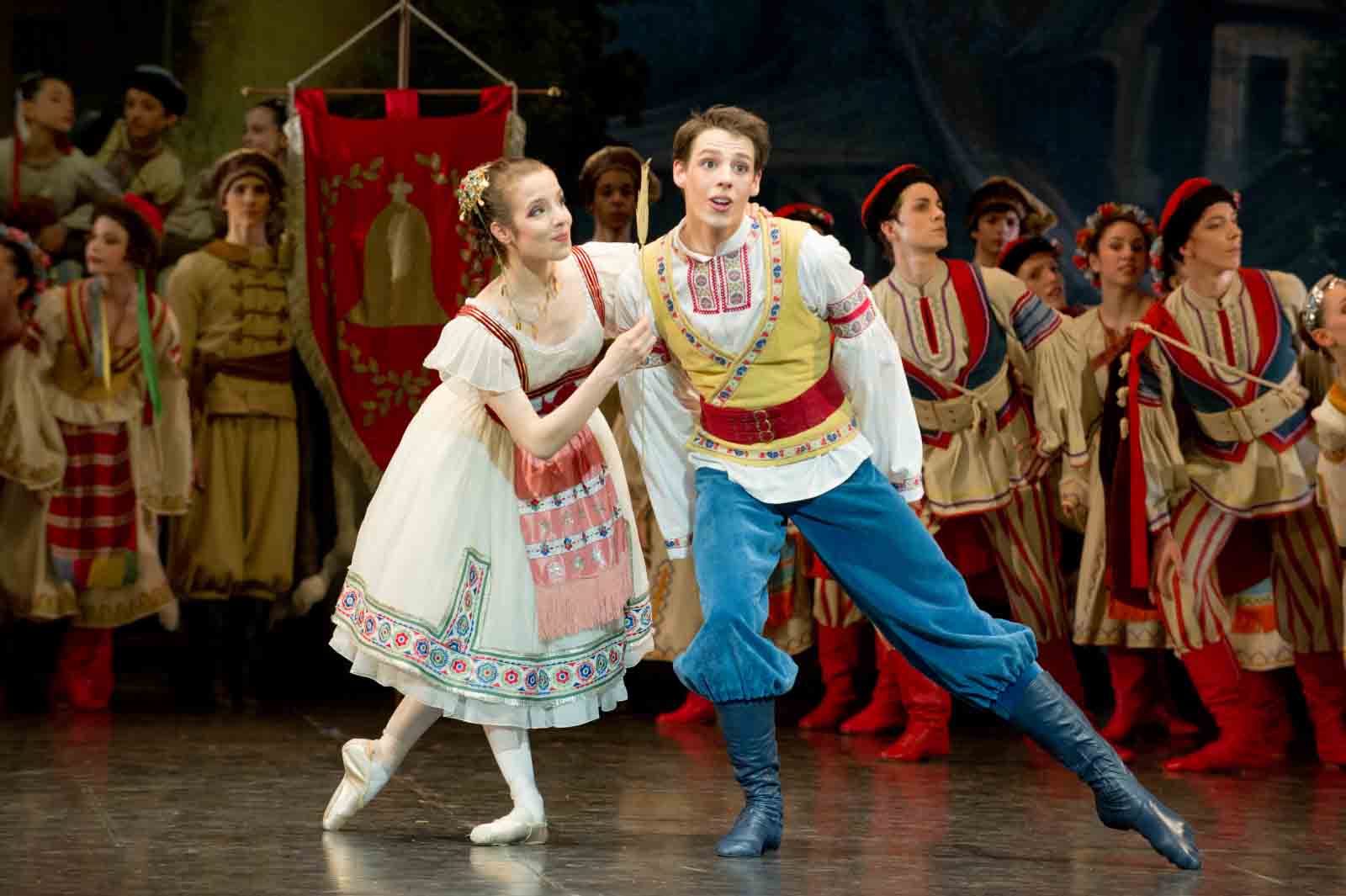
Put to the Test: Paris Opera Ballet students Marie Varlet and Germain Louvet as Swanilda and Franz in Coppélia
Photo: David Elofer
Swanilda’s straying beau is something of a dolt, though one with considerable appeal if very few brains. During the stalk of wheat test–if you can hear the seeds rustle, your lover is true–with their whole rural community watching, he hasn’t the sense even to pretend he hears the happy message.
No matter, Swanilda is clever enough for both of them and feisty enough to let nothing stand in the way of her getting what she wants. She may be a girl who’s reduced to tears by her sweetheart’s skewering, then trampling on the butterfly she was blithely chasing, but she’s willing to trick him when his foolish heart strays to the dolly in the window. What’s more–much more–she’s ruthlessly cruel to the doll’s creator, Dr. Coppélius, pretending she is his cherished automaton come to life and then disabusing him of his dream.
I saw Marie Varlet and Alizée Sicre as Swanilda; the latter is the more febrile and ambitious, perhaps for stardom. Both Germain Louvet and Mathieu Contat played Franz, combining an appropriately youthful lack of sophistication with technical élan.
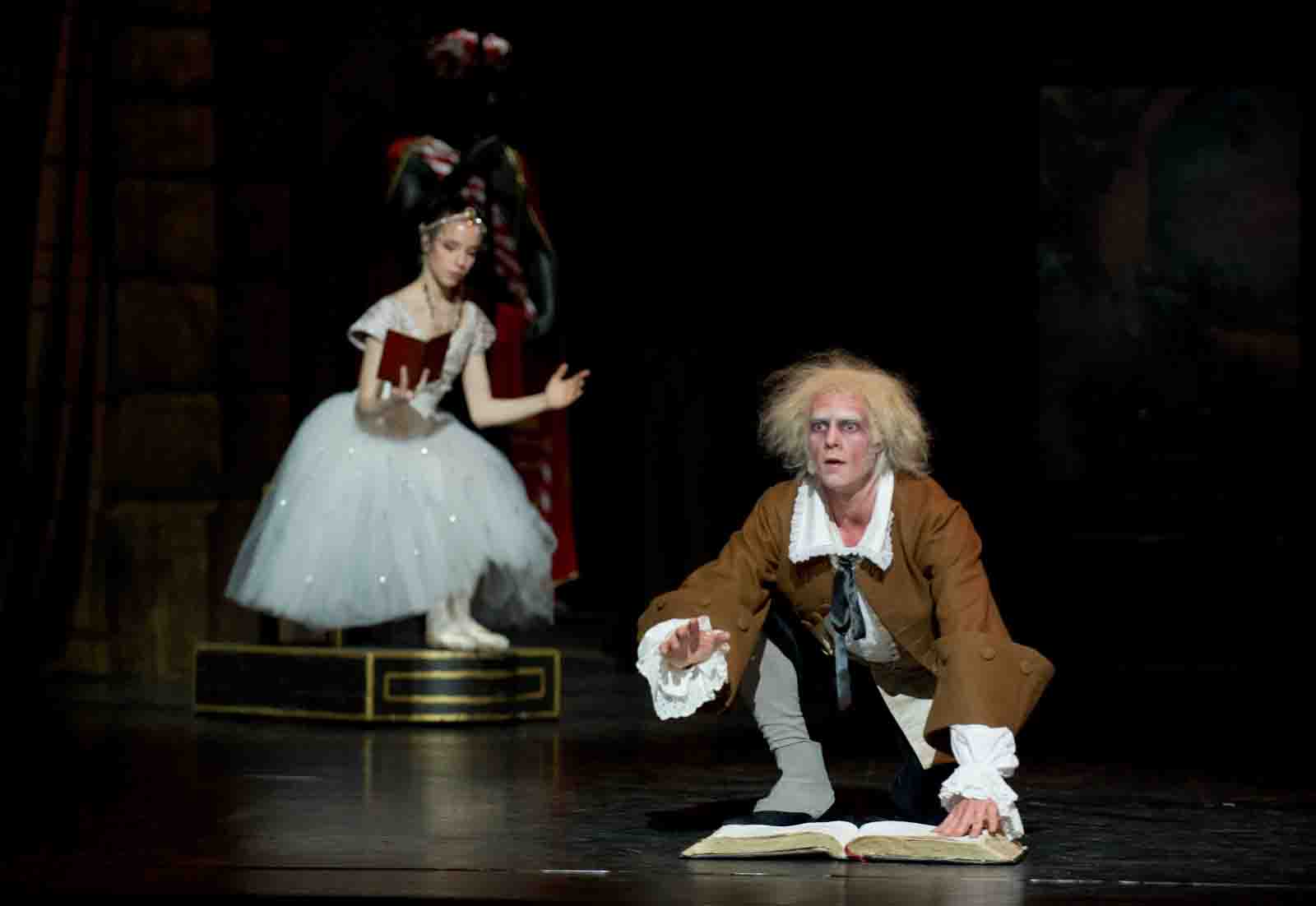
Idée Fixe: Paris Opera Ballet student Natan Bouzy as Dr. Coppélius in Coppélia
Photo: David Elofer
Most notable of all is the student rendering of Dr. Coppélius, because those trusted with the role are evidently allowed considerable leeway in honing their own interpretations. Natan Bouzy gave the role a sound traditional interpretation, playing Coppélius as a gimpy old man obsessed by an idea any normal villager–and indeed anyone in the audience–would dismiss as nutty. His signature image is the greedy hands with which he tries to seize Franz’s life spirit to implant it in Coppélia.
Julien Guillemard offered an unusually creative interpretation. His Coppélius was not even old, but simply an outsider intent upon his improbable vision. Despite the community’s scorning him as a reclusive, half mad fellow, he seemed truly to believe that, through the arcane instructions in his gigantic book of spells, he could bring his beautiful automaton to life, give her not merely the human breath that would transform her motion from staccato to lyric but also a heart that could awaken to love.
Guillemard’s portrayal has not yet accumulated the fascinating detail that distinguished the two most original and effective men I’ve seen in the role–Niels Bjørn Larsen of the Royal Danish Ballet and Shaun O’Brien of the New York City Ballet. But they had been evolving their characterizations for decades–to the point of being able to improvise on any part of them in performance. Meanwhile Guillemard was utterly convinced of, and convincing in, the persona he has worked out so far.
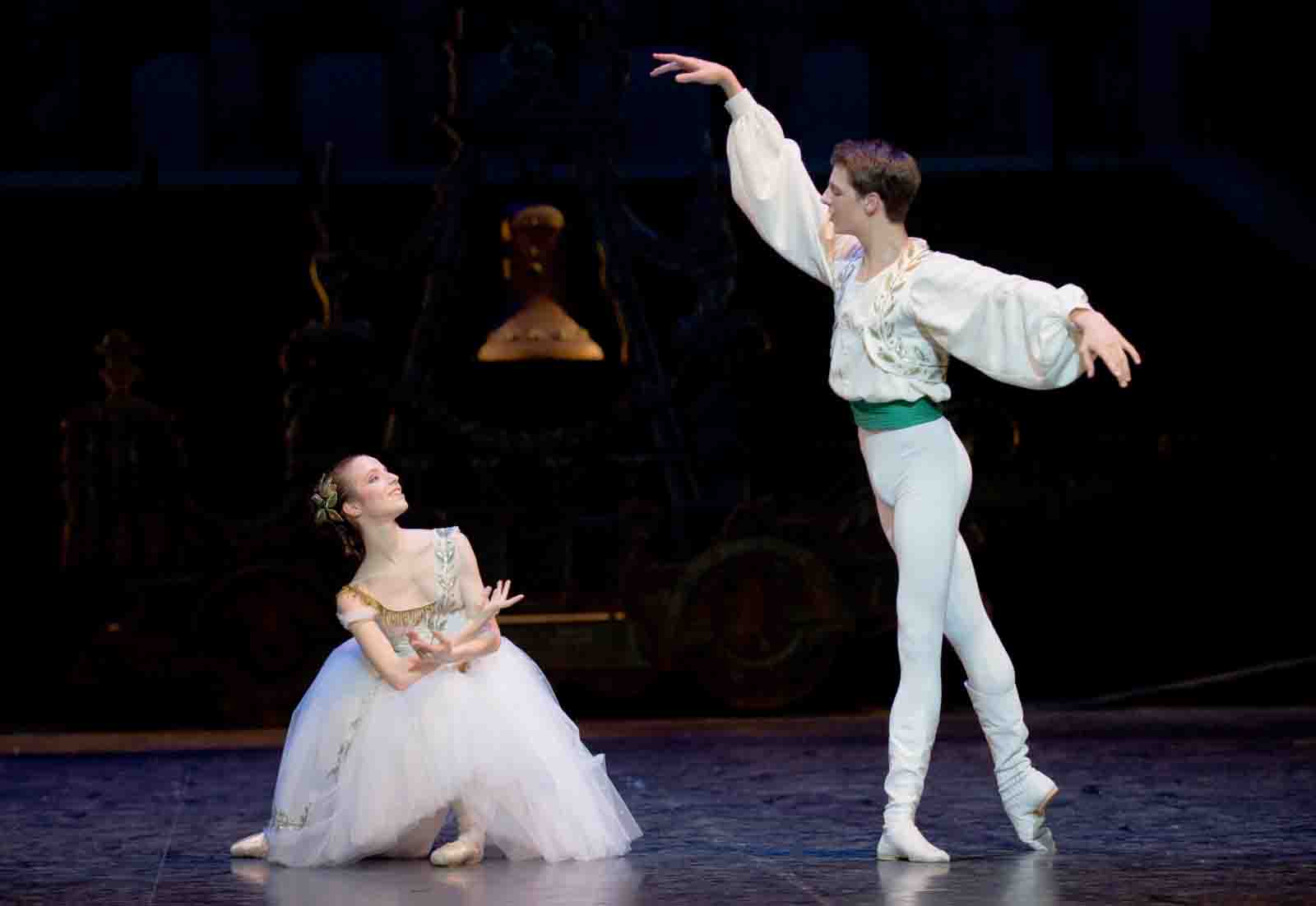
All’s Well That Ends Well: Swanilda (Marie Varlet) and Franz (Germain Louvet) get married
Photo: David Elofer
There was so much to like in this program and it made such an optimistic prediction for the future that, after seeing it, the only thing I wanted was to see it again. And I did.
POSTSCRIPT:
People agreeing with the conventional assessment of the relative value of pictures and words may want to watch a six-minute excerpt on YouTube from the current three-act production of Coppélia that is pretty much what I saw, except for the mature Lacotte’s appropriating the role of Dr. Coppélius for himself. The Swanilda is Charline Giezeendanner; Franz is Mathieu Ganio. To view it, click here.
YouTube also harbors a two-act version of Coppélia performed by the POB students in 2001 and credited to Claude Bessy, then the director of the school, and Pierre Lacotte, after the version of Albert Aveline. A shade over one hour long, it shows a bit of the Palais Garnier, outside and in, some sweet backstage footage, and the full performance. To see it, click here.
© 2011 Tobi Tobias




We are just back from Paris with our 14-year old granddaughter, and though we did not get to the “Dame a La Licorne” tapestries at the Cluny, we did see Nureyev’s “Romeo & Juliet” at the Bastille and we did get on one of the English-language tours of the Palais Garnier, both wonderful beyond my imagination. So it is lovely to get your post and the links to the YouTube of the Garnier!
I was disappointed, however, that we could not get access to the museum. In 1987, as I remember, the little museum had Taglioni’s shoes, among other treasures. Do you happen to know where they went?
Thank you for taking me to Paris, via your post, in the spring time.
I’ve enjoyed Pierre Lacotte’s re-staging of “Coppélia” several times at the Palais Garnier, with his attempt to restore much of the Saint-Léon original as revised in 1936 by Albert Aveline. It should be noted, however, that Lacotte has made a major change in having Franz played by a male dancer rather than a ballerina en travestie, as had been usual from the time the role was created by Eugénie Fiocre in 1870 up to 1961.
Lacotte’s other big change to the traditional Opéra version was restoring the third act, which had been dropped in 1873, so that the ballet could more conveniently be played with one of the shorter operas, so that no traces of Saint-Léon’s original conclusion remain. While the first two acts are played in a delightful reproduction of the original sets, an entirely new and surprisingly dark set was commissioned for act 3, which is entirely Lacotte’s own choreography. I have some reservations about some of the costumes for the Balanchine-Danilova re-staging of this act, especially those for the usually cut Discord and War, Lacotte’s act 3 is the weakest part of his version. As a result, I don’t at all mind having just the first two acts with the Paris Opéra School on DVD, with Lacotte playing Coppélius, a delightful work charmingly danced all round.
Thank you for your lovely review, and the photos. What a delight to see dancers’ mirroring poses with arms and legs at precisely the same height and angles!